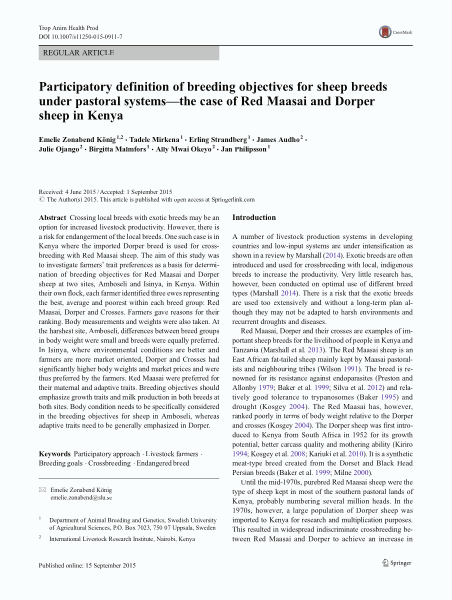Participatory definition of breeding objectives for sheep breeds under pastoral systems—the case of Red Maasai and Dorper sheep in Kenya
Abstract
Crossing local breeds with exotic breeds may be an option for increased livestock productivity. However, there is a risk for endangerment of the local breeds. One such case is in Kenya where the imported Dorper breed is used for crossbreeding with Red Maasai sheep. The aim of this study was to investigate farmers’ trait preferences as a basis for determination of breeding objectives for Red Maasai and Dorper sheep at two sites, Amboseli and Isinya, in Kenya. Within their own flock, each farmer identified three ewes representing the best, average and poorest within each breed group: Red Maasai, Dorper and Crosses. Farmers gave reasons for their ranking. Body measurements and weights were also taken. At the harshest site, Amboseli, differences between breed groups in body weight were small and breeds were equally preferred. In Isinya, where environmental conditions are better and farmers are more market oriented, Dorper and Crosses had significantly higher body weights and market prices and were thus preferred by the farmers. Red Maasai were preferred for their maternal and adaptive traits. Breeding objectives should emphasize growth traits and milk production in both breeds at both sites. Body condition needs to be specifically considered in the breeding objectives for sheep in Amboseli, whereas adaptive traits need to be generally emphasized in Dorper.

